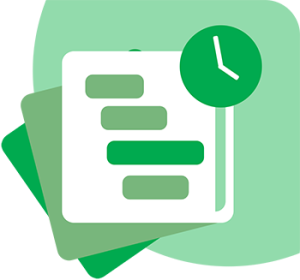How much do you need to save?

A good amount of money in your savings account is nice to have behind you. We also call this a “f*ck it” jar: that if you are in a situation where you are not happy, you can say, “f*ck it, I’m going to do something else!” Apart from this, it is just very nice to have money behind you. Not just pleasant: super important. Such a financial cushion ensures that you can live carefree even during some down times. But how much should you save? And how can you make a savings plan for yourself? In this article, we are going to help you!
Why is saving important?
In our journey to financial independence, it is vital to have a nice savings. In case you unexpectedly find yourself out of work. Or your relationship suddenly goes out. Whether you will jump into the deep end to set up your own business after all. Whether your car breaks down. Whether, as a self-employed person, you get pregnant and can work less for a while. For whatever reason, having a buffer behind gives a sense of freedom.
So a buffer amount is like a piggy bank for emergencies. How much you need to set aside for this varies from household to household and depends on a number of factors. But how much do you need to save to feel fine?
Nibud Buffer Calculator
From the Nibud, it is recommended to save 10% of your income each month. This is slightly more than the average Dutch person saves, at 6.5% on a monthly basis. Then you can use the Buffer Calculator to calculate your ideal buffer amount.
Do you live alone in a rental property, your net income is €1500 per month and you have a car? Then the buffer amount comes to €9600. Do you have a family with 3 children, net income of €3000 total, a house to buy and a car? Then the ideal buffer amount could be as much as €26300. So this depends entirely on your situation.
How can you save?
Building a good buffer amount can be a big step. Especially if you don’t have that much in your savings account yet. Don’t know where to start? Then start creating a financial statement. Need help with this? Check out our Create your multi-year financial plan course and get help creating your plan!
Write down all your income and expenses and calculate the amount you can set aside each month. Then make a plan where you build up your buffer amount slowly. Stick to this plan and replenish your buffer when you spend some. Everything you take out, you replenish. This way you will always have enough money behind you in the long run.
Smart saving
But how do you make sure your savings account is nicely filled without it being a struggle every month? So how do you go about saving smart? How do you become a savings guru without throwing yourself into all sorts of twists and turns every month?
Simple:
automate!
Every month, on the day your salary is deposited – or on a fixed day if you are a self-employed person or business owner – you automatically have a fixed amount transferred to a savings account.
A bill you then don’t touch. And this temptation should be minimal, so our tip would be to open a separate account for it. Make sure the temptation to transfer money back and forth is minimal.
Savings rate
So what amount is ideal to save? This depends on your income, but try aiming for a 20% savings rate: putting aside 20% of your net income. Fail to go from 0% to 20%? Don’t worry, and start with 1%. The next month make it 2%, and so on. After a year, you then very gradually have a savings rate know your creating 12%!
And yes, maybe that means fewer dinners, fewer new shoes, and fewer visits to the manicurist. But who cares, because a piggy bank that can give you that f*ck you attitude is priceless.
So follow this tip, start saving smart and create that buffer too!





